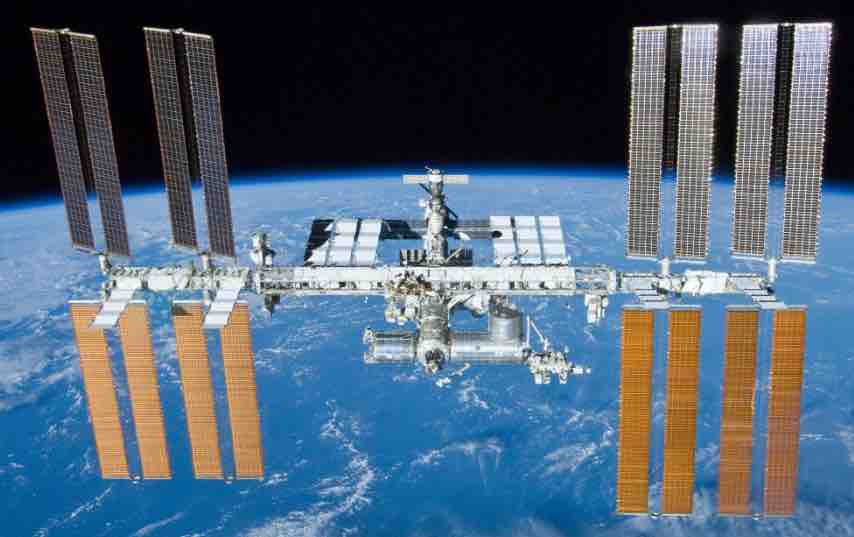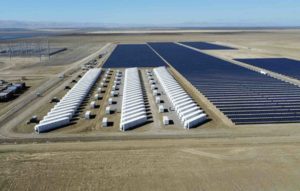This month is an interesting anniversary: the sixtieth anniversary of solar power in space.
On 17 March 1958, the American satellite Vanguard 1 entered orbit, becoming the fourth satellite ever to do so, and the first to use solar power. Vanguard 1 was small enough to be held in one hand — 1.5 kg (3 lbs) in mass and 16 cm (6”) in diameter, with antenna aerials 76 cm (30”) across.
Altogether, Vanguard 1 had 6 silicon solar cells which generated about 1 wattin total. For comparison, the power produced by a typical rooftop solar PV system in 2018 is several thousand times greater, and global solar power capacity is hundreds of billions times greater.

Why did the first satellites use electrical power? Primarily, to send radio signals back to Earth. The first satellite ever to reach orbit was the Soviet satellite Sputnik 1,which achieved orbit 6 months before Vanguard 1 and broadcast radio signals at 20 MHz and 40 MHz.
These radio signals could be detected on Earth, even by amateur radio users.
They provided additional proof that the satellite really was in orbit around the earth(it could also be seen with large telescopes), also allowed observers to measure its position and trajectory. The power to provide this radio signal came from batteries, which lasted for 21 days before they went flat.

Such radio communications were one-way only. Early satellites could not receive communications from Earth, and were essentially a battery, radio transmitter, and an antenna.
The second and third satellites, the Soviet Sputnik 2 and US Explorer 1, also used batteries to power radio signals, which lasted somewhat longer (Explorer 1 had a lower power mode that lasted 105 days).
Vanguard 1, however, had two radio transmitters. One transmitter (at 108 MHz) was powered by a battery, which lasted for 20 days.
The second transmitter (at a slightly higher radio frequency, 108.3 MHz) was powered by the (as yet unproven) solar cells, and that broadcast for over six years, or over 23,000 orbits of the Earth, before going silent.

Vanguard 1 was essentially a prototype satellite, a learning exercise to make future satellites more reliable. The only scientific equipment other than the radio transmitters were two thermistors, which measured the change in the temperature of the satellite body as it moved from sunlight to the Earth’s shadow and back again. However, because Vanguard 1 broadcast its position using its solar powered transmitter for more than six years, scientists gradually accumulated enough data to determine new information about the shape of the Earth. It was known previously that the Earth was not a perfect sphere, and was flattened at the poles. Newton had predicted this flattening, which is caused by the Earth’s rotation, and it was confirmed in 1887 when a team led by Alexander Ross Clarke measured that the Earth’s radius was 21 km greater or 0.3% greater at the equator than the poles. Measurements of Vanguard 1’s trajectory in orbit showed that, in addition to this flattening, that the Earth very slightly “pear shaped” — was asymmetrical between the Northern and Southern hemispheres.
Satellites and spaceflight were one the first uses of solar power. Photovoltaic cells at that time were incredibly expensive, and their intermittent output was difficult to manage since rechargeable batteries were also very expensive. In space, however, solar power had clear advantages.
Combustion, for example, requires that both fuel and oxygen (or another oxidant) be brought up from the Earth in tanks.
For example, the Saturn V rocket engines that sent humans to the moon had tanks of liquid hydrogen and liquid oxygen. (Those engines were obviously used to make the rocket move, not to generate electricity).
Non-rechargeable batteries could not provide power for long without a lot of “chemical fuel”. But in space, above the clouds, solar power was more or less constant the whole time that the panels were not behind the earth. No fuel is needed.
Satellites typically orbited the Earth every few hours, so that when rechargeable batteries did start to be used with solar panels, they were small compared to those needed to last the entire long night on earth.

Today, the International Space Station has 84 kW of solar panels, which provide all its power, including life support systems for the 6 crew, communications and scientific equipment. Rechargeable batteries provide power during the 35 out of every 90 minutes that the station is in the shadow of the Earth.


What happened to Vanguard 1?
Although its radio no longer transmits, Vanguard 1 continues to orbit the Earth today, at an altitude between 600 and 4,000 km (370 to 2,500 miles), going around the Earth approximately every 2 hours.
It is now the oldest object made by humans to still be in space. Sputnik 1 and Sputnik 2 reentered the atmosphere around one year after launch, and Explorer 1 reentered in 1970.
Vanguard 1 is in a very stable orbit, and is predicted by NASA to last for another 180 years. Several websites track its location (Satflare, n2yo). You can see the live location of Vanguard 1 on an interactive 3D globe here.

As a final note, in researching this article I came across some extraordinary audio recordings of Vanguard 1 transmissions made by amateur radio enthusiast Roy Welch in 1958 and 59. (The signals have been modified to bring them into audible frequencies).
Roy Welch wrote that he believed that the variations in frequency were due to the satellite spinning around, varying the light exposure to the solar cells. The recording from 1959 I find eerie:
It is quite something to listen to the recording and to imagine the tiny Vanguard satellite back in 1959, moving high above the Earth, broadcasting its lonely radio signal.
If you or your neighbours have solar panels on your rooftop, it is also something to think that the first solar panels in space are still up there, passing by several times per day, high overhead, and slowing turning around in the sunlight.










